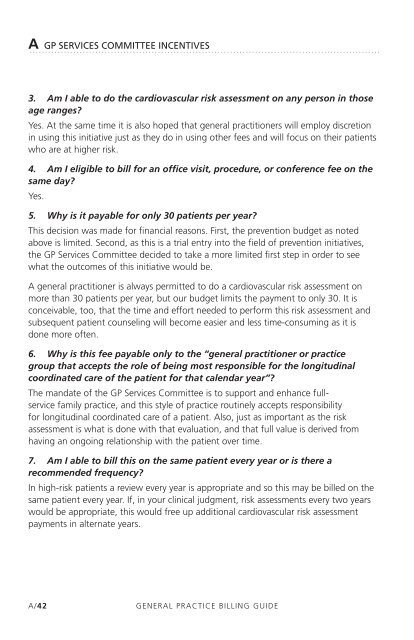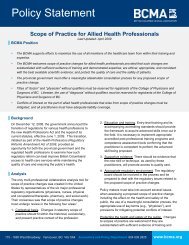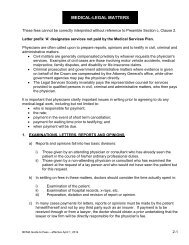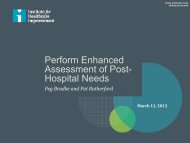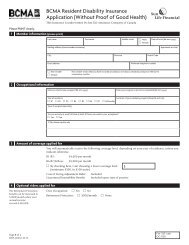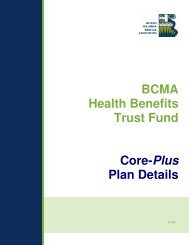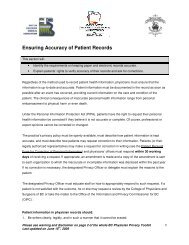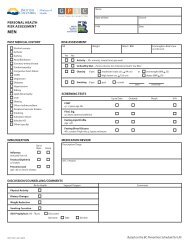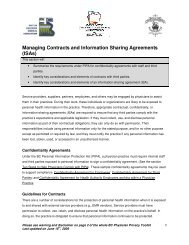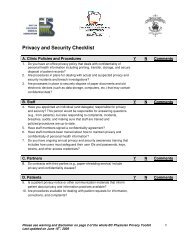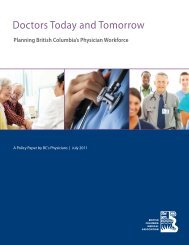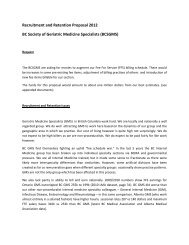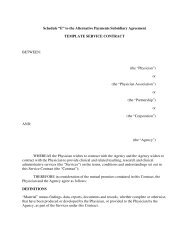General Practice BILLING GUIDE - British Columbia Medical ...
General Practice BILLING GUIDE - British Columbia Medical ...
General Practice BILLING GUIDE - British Columbia Medical ...
Create successful ePaper yourself
Turn your PDF publications into a flip-book with our unique Google optimized e-Paper software.
A GP SERVICES COMMITTEE INCENTIVES<br />
3. Am I able to do the cardiovascular risk assessment on any person in those<br />
age ranges?<br />
Yes. At the same time it is also hoped that general practitioners will employ discretion<br />
in using this initiative just as they do in using other fees and will focus on their patients<br />
who are at higher risk.<br />
4. Am I eligible to bill for an office visit, procedure, or conference fee on the<br />
same day?<br />
Yes.<br />
5. Why is it payable for only 30 patients per year?<br />
This decision was made for financial reasons. First, the prevention budget as noted<br />
above is limited. Second, as this is a trial entry into the field of prevention initiatives,<br />
the GP Services Committee decided to take a more limited first step in order to see<br />
what the outcomes of this initiative would be.<br />
A general practitioner is always permitted to do a cardiovascular risk assessment on<br />
more than 30 patients per year, but our budget limits the payment to only 30. It is<br />
conceivable, too, that the time and effort needed to perform this risk assessment and<br />
subsequent patient counseling will become easier and less time-consuming as it is<br />
done more often.<br />
6. Why is this fee payable only to the “general practitioner or practice<br />
group that accepts the role of being most responsible for the longitudinal<br />
coordinated care of the patient for that calendar year”?<br />
The mandate of the GP Services Committee is to support and enhance fullservice<br />
family practice, and this style of practice routinely accepts responsibility<br />
for longitudinal coordinated care of a patient. Also, just as important as the risk<br />
assessment is what is done with that evaluation, and that full value is derived from<br />
having an ongoing relationship with the patient over time.<br />
7. Am I able to bill this on the same patient every year or is there a<br />
recommended frequency?<br />
In high-risk patients a review every year is appropriate and so this may be billed on the<br />
same patient every year. If, in your clinical judgment, risk assessments every two years<br />
would be appropriate, this would free up additional cardiovascular risk assessment<br />
payments in alternate years.<br />
A/42<br />
GENERAL PRACTICE <strong>BILLING</strong> <strong>GUIDE</strong>


